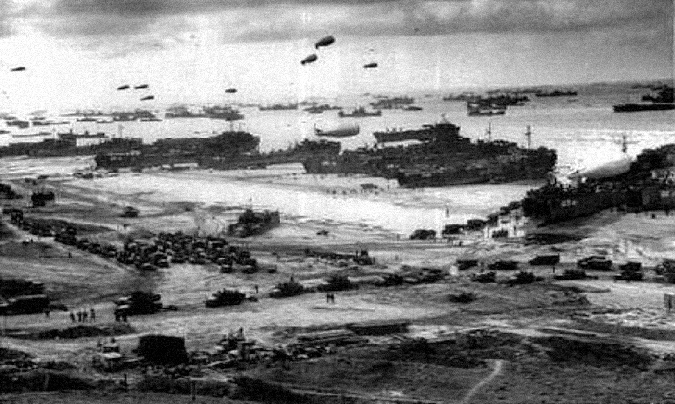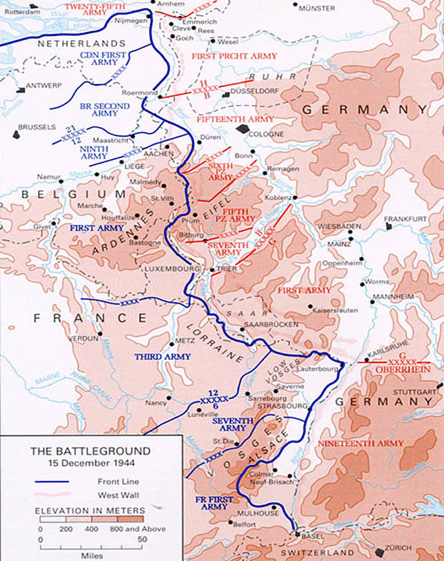Historians always talk about turning points, which are event(s) that occur causing a shift in the expected outcome. The next two battles (D-Day and the Battle of the Bulge) are considered turning points, particularly the D-Day invasion on June 6, 1944. General Eisenhower gave a speech to the allied soldiers just prior to the invasion.
![]() Watch this video and listen to his speech.
Watch this video and listen to his speech.
Source: General Dwight D. Eisenhower's D-Day speech, Chrismiddleton23, YouTube
Code-named Operation Overlord, the D-Day invasion began on June 6, 1944. As shown in the picture below, the beaches of Normandy were filled with naval vessels, ground forces, military vehicles, and a variety of weaponry.

Source: D-Day, Jashonic.com
It remains the largest military offensive ever organized. Facing Hitler's Atlantic Wall, the Allies suffered thousands of casualties just in the first day, but the sheer number of forces and weaponry eventually broke through. This was to be the second or "Western" front that the Soviet Union had been requesting. With the Allies' success, France was liberated.
![]() Watch the following video about the D-Day Invasion because words alone will never give these struggles their due justice.
Watch the following video about the D-Day Invasion because words alone will never give these struggles their due justice.
Source: Normandy Invasion, Britannica.com, YouTube
Battle of the Bulge
In December 1944, having been expelled from France, Germany regrouped along the French and German border along the Ardennes Forest. Allied forces had been advancing swiftly and were completely surprised by the German counter-attack.

Source: Ardennes Battle December 1944, Wikimedia
Prime Minister Winston Churchill of Great Britain was quoted as saying that the German attack created a bulge (see the bend near Luxembourg in the blue Front Line) in the Allied advance. So that is how this battle got its name. The Allies were briefly halted, but with reinforcements and the relocation of its forces, they managed to push the Germans back. This would prove to be Germany's last major offensive and with the loss, the road was now open to Berlin, Germany.

![]() View this presentation on the D-Day Invasion at Normandy and the counter-attack by the Germans known as the Battle of the Bulge.
View this presentation on the D-Day Invasion at Normandy and the counter-attack by the Germans known as the Battle of the Bulge.
Source: World War II D-day and the Battle of the Bulge, Elroyhale, Teacher Tube